Tomato sauces - the results are in!
stats on how Italians make their quickest tomato sauce for pasta
A few weeks ago I did a little experiment on my socials.
I asked all Italian followers to answer a few simple questions on how they make their quickest everyday simple tomato sauce to be eaten with pasta.
I also reached out to a facebook community of Italians resident abroad and got about 300 responses in total.
The main questions I was asking were:
What kind of soffritto do you use when you make a simple tomato sauce at home?
Do you ever mix garlic and onions in the soffritto?
Do you ever use butter and if so when?
What kind of tinned tomatoes do you use?
Do you use the vegetable mill to obtain a smoother sauce?
The “soffritto dilemma”
The first two questions are about the base of the tomato sauce, which in Italy we call Soffritto.
Linguistics become a little vague when it comes to Italian Soffritto. I always understood it as a generic word that can mean different types of allium vegetables (garlic, onions, shallots) and other vegetables (carrots, celery), cooked very gently in olive oil or other fats (lard used to be common), and usually it’s the starting point for almost any sauce, soup and minestra in Italy.
Many Italians seem to think that when you say soffritto you are talking only about the classic combination of onion, celery and carrot, very dear to northern Italy, and often the starting point for the preparation of more complex sauces such as meat ragu’.
Most online dictionaries and definitions seem to agree with my version, i.e. any combination of allium and fat, so I will stick to that word to describe all the options. Here is what people said about their everyday soffritto for tomato sauce
One of the reasons why I asked this question, was to discuss the option of using both onion and garlic at the same time. I personally have never experienced this in Italy, it’s usually either or, but I have seen it as a combination in many Italian-American recipes, so my curiosity was sparked.
Most Italians were quite militant as they answered “never together!!”, but as you can see from the results, it is actually more common than I thought!
One chef provided the reasoning that garlic cooks and burns very quickly compared to onions and that’s why they are hard to mix together in a soffritto. He suggested infusing the oil with garlic and basil in a separate pan and then adding it to the onion soffritto when the tomatoes are added in.
Regional Variety
I had attempted to ask people where they grew up, as i was under the illusion that I could see regional trends. The obvious one would have been a more garlic for the south and more onion for the north, but I was wrong. It’s impossible to establish a pattern, also because most of the people that answered have very mixed background. Since the 1960’s internal migrations have been very common in Italy, so families with backgrounds from both north and south are very common.
One thing that I noticed is that quite a few Sardinians talked about making a sauce without soffritto altogether, hence I am guessing that it is a more common thing on the beautiful island.
Quite a few other people expressed their distate for any form of soffritto with tomato sauce, and they mentioned that they prefer to add the onions and/or garlic directly with the tomatoes without precooking them in oil. We call this technique “A freddo”, since all the ingredients are put together in the pot as cold.
Butter or no butter?
I was very interested in this question too, as a couple of years ago, someone told me that the most perfect Italian American tomato sauce recipe had butter in it added at the end.
I was at first horrified by the notion, as the idea seemed so remote to me, but with time I started seeing the appearance of butter in a few Italian recipes and therefore I needed to check.
Hardly anyone told me that they add butter at the end (as in the Italian-American recipe), but a few people mentioned that their nonna used butter or a mix of butter and oil for the soffritto back in the day. Inevitably these nonne were from northern Italy!
What kind of tomatoes?
The last two questions were more curiosity than anything else. While reflecting on the tomatoes article I wrote a while back, I wanted to know what kind of products Italians used for their sauce.
Many people, who live in sun kissed parts of the world mentioned fresh tomatoes from their own garden (lucky them!). Almost anyone else mentioned passata and/or pelati (whole tinned tomatoes).
I guess most people like their sauce a bit chunky and prefers hand crushed tomatoes, so very few people mentioned using a vegetable mill to remove skins, seeds etc… In case you are not familiar with what that is, have a look at this picture
This type of passaverdure was very common in every Italian household when I was a kid, and was mostly used for tomatoes and for making homemade passata.

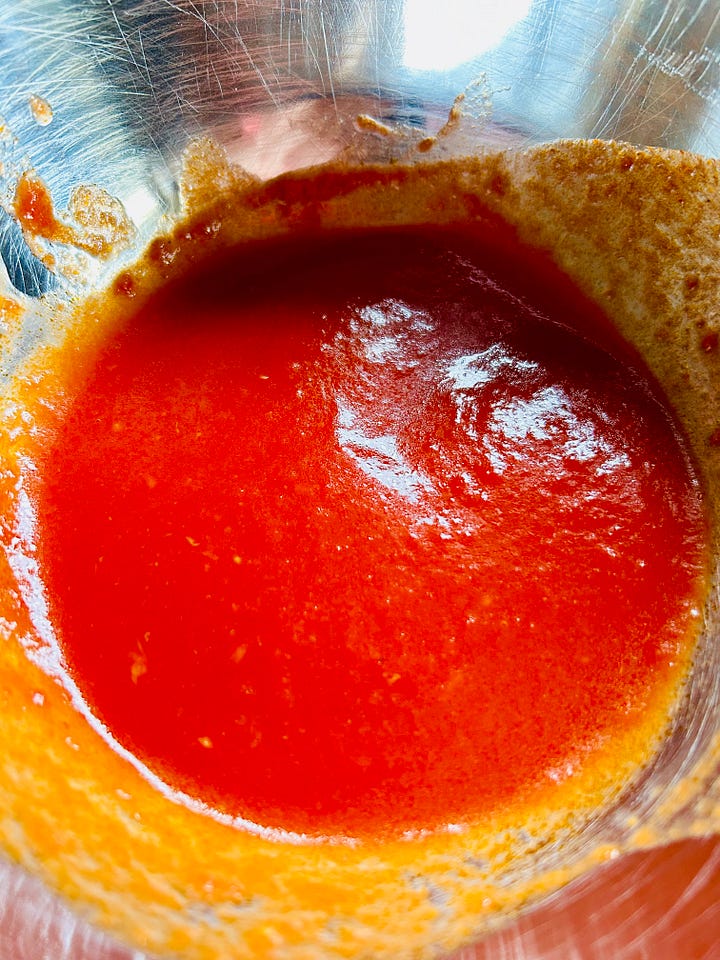
Mutti was mentioned by the majority of people as their go to industrial product. This brand is incredibly popular among Italians, so much that its name has become the product itself, and many people just wrote “I add some Mutti”, without specifying if it was passata or something else!
I was surprised that only one person talked about tomato concentrate. For me growing up in a Sicilian household, tomato concentrate was a vital ingredient in the pantry, and for my Nonna it was very often a complete substitute to any form of tomatoes.
So how do we make tomato sauce?
I made a little drawing trying to represent all the different ways to make tomato sauce discussed in these stats starting with tinned or preserved tomatoes (but the process with fresh tomatoes is actually quite similar).
What’s my conclusion to this little experiment?
Let’s take these results with a pinch of salt. These are 300 Italians (in a country of 58 million) and for sure they do not represent the entire nation.
I often joked in the past saying that if you asked 300 nonne for a tomato sauce recipe, you would get 300 different recipes and they would all be “the only way to make tomato sauce”, and “the best tomato sauce”.
I didn’t quite get 300 recipes, most of them are very similar in fact. Nevertheless everyone does it in a slightly different way. I should also mention that many people provided 3 or 4 different way they make it and that it varies with the season and their mood.
The reason why I started this research is that I wanted to prove that in Italy there is not one authentic way to cook anything. Italian cuisine is actually for the majority quite young and it comes from oral tradition, and therefore nothing is fixed and it’s in constant evolution. That is a good thing, as when you try to academize and “fix” oral tradition, you are actually making it die.
It might seem obvious to you, but most Italians nowadays are fixated with “the only traditional way” of making anything. Think about all the “Carbonara wars” for example.
Whoever claims that there is only one way of making anything Italian doesn’t actually have a very deep understanding of the cuisine and its history and they are obtaining the opposite result to what they think they are doing.
“Il mondo è bello perché è vario” (the world is beautiful because it’s varied).
Open your mind and buon appetito!




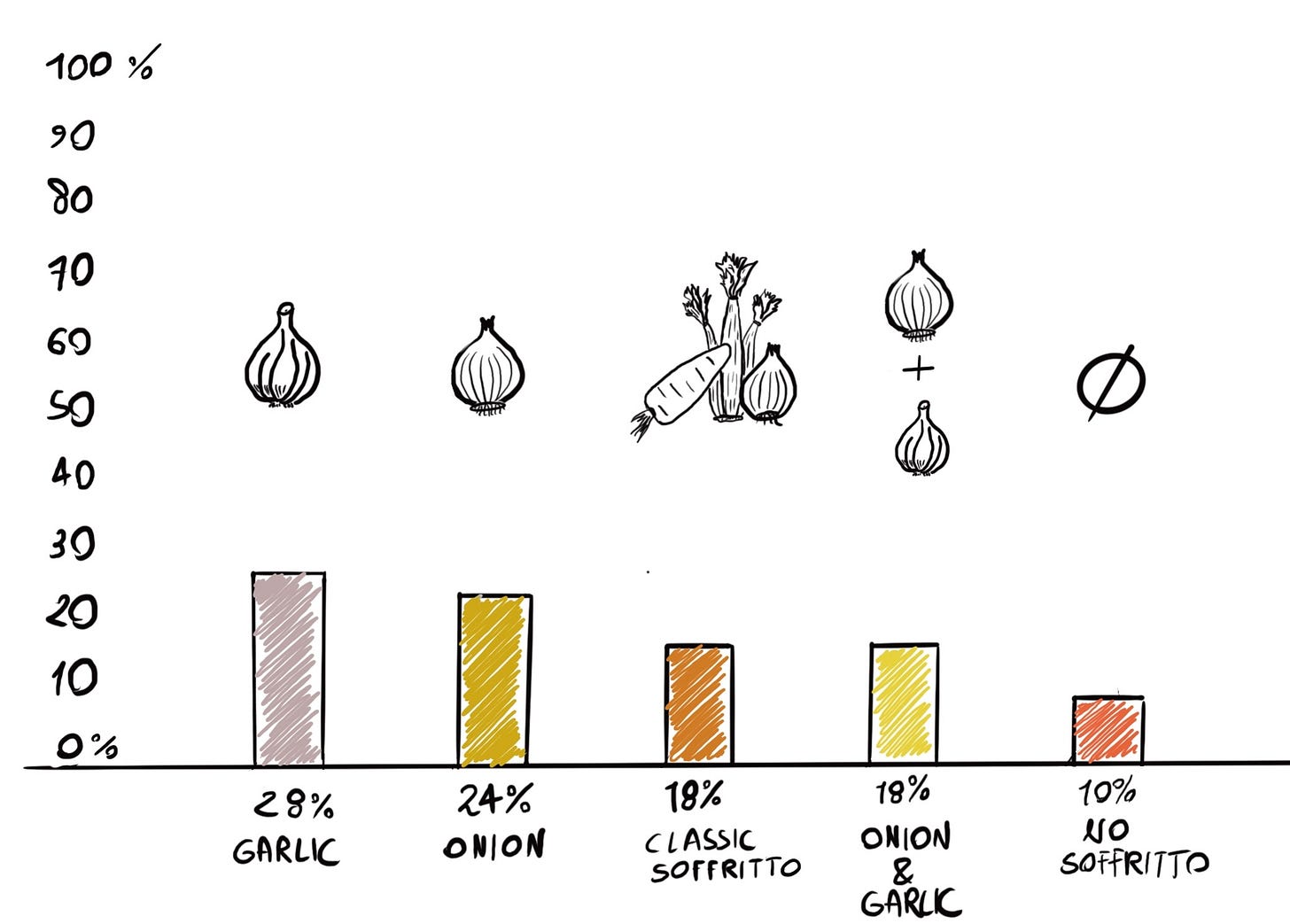
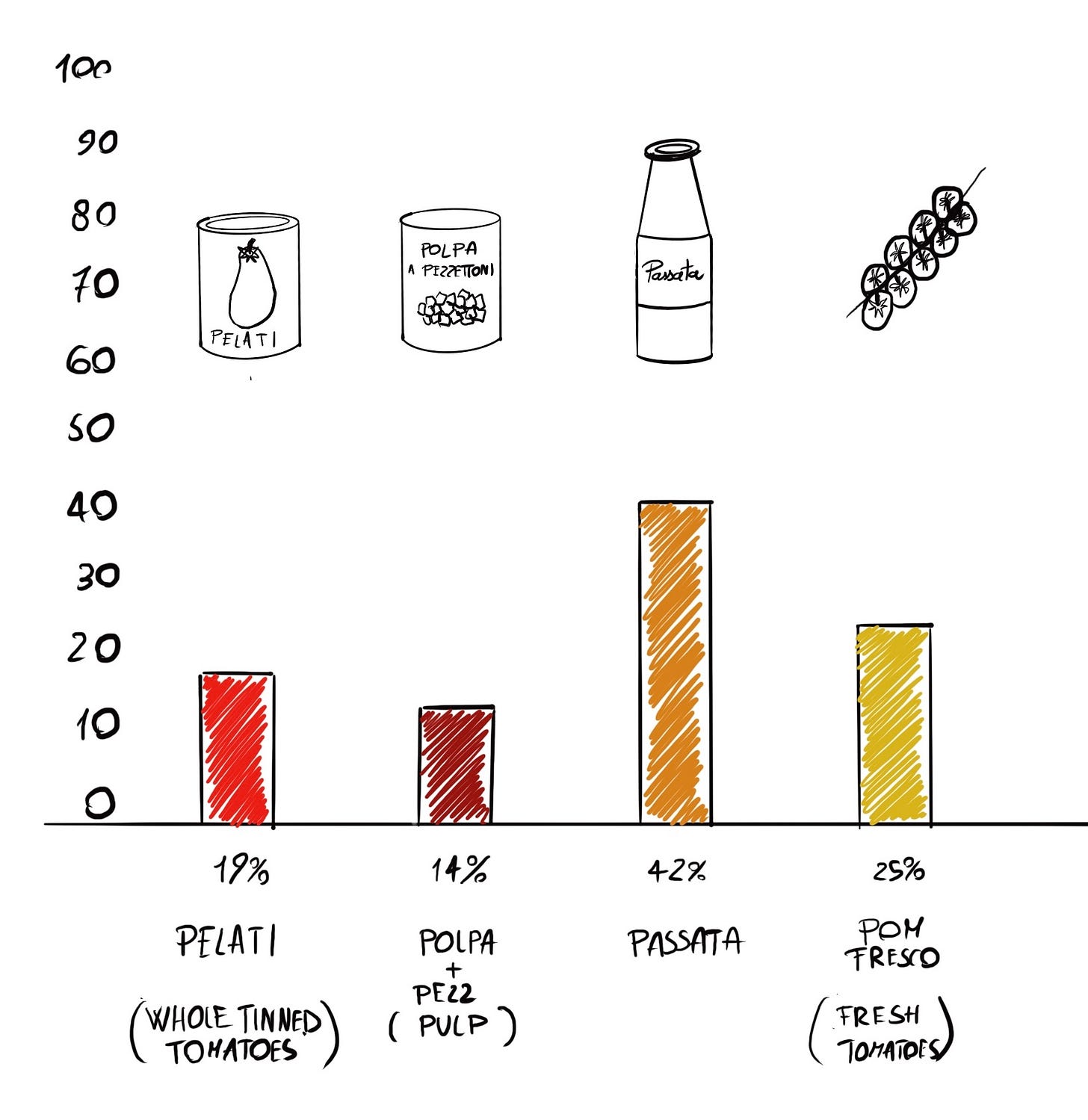
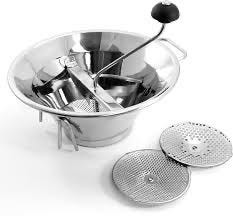
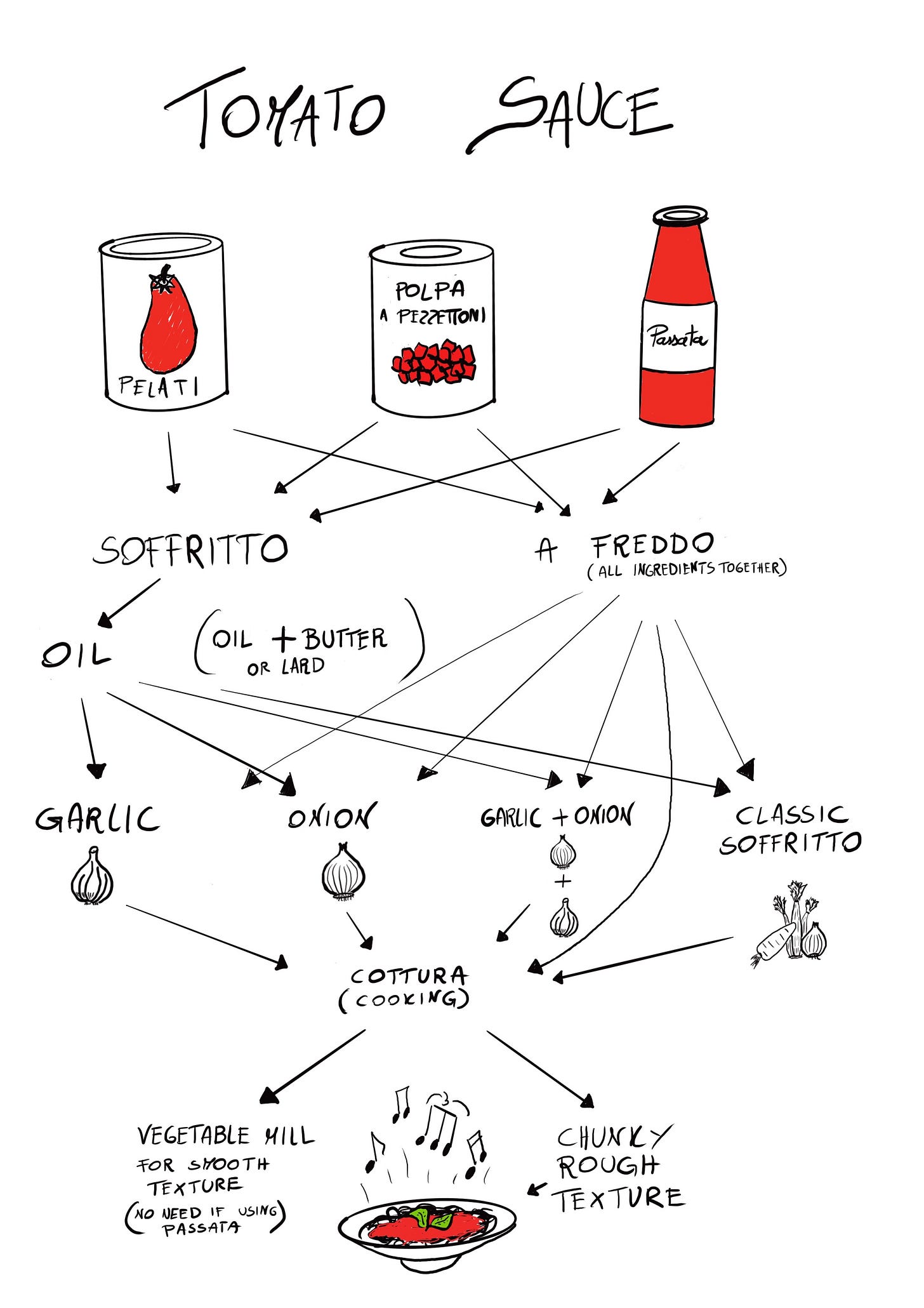
Fascinating, thank you. Marcella Hazan has a recipe in "Essentials Of Classic Italian Cooking" for a tomato sauce with butter; I'm not sure if her cuisine considered Italian or Italian-American? In any case, maybe the butter she uses is of a different character to Irish butter but we found it a bit overpowering; best to save the butter for the spuds was our conclusion.
When we were growing up the only tinned tomatoes you could get were not good quality, to say the least. Now I can go to Dunnes Stores and for a few quid buy incredibile Pomodoro di San Marzano dell'Agro Sarnese-Nocerino (D.O.P.); it's tough to make a bad sauce with great tomatoes, whatever variations I might employ.
Incidentally I know it's not the orthodox treatment but when I use garlic in a sauce like this I blanch whole cloves in simmering water for a few minutes first (I use the water I cook the pasta in); then I mash it with a fork and stir it into the sauce at the end. It gives the sauce a very mellow garlic flavour, and you still whatever nutritional benefit there is in consuming the garlic flesh.
Also: can we hear more about the Carbonara wars?!
Thank you. This is more entertaining (and instructive) than a good "thriller".